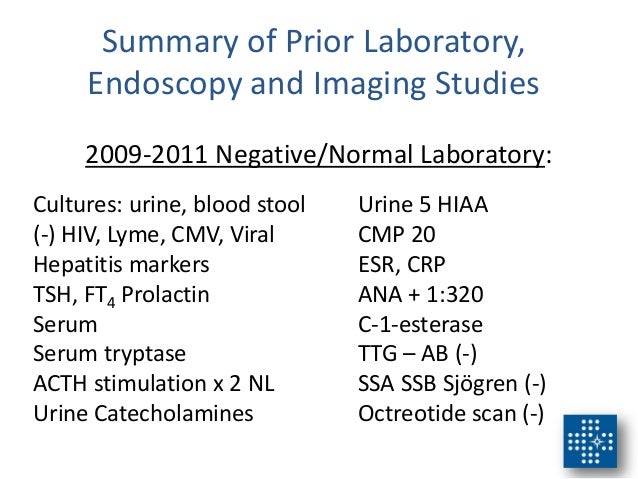Occasional Bloody Stool
You may be lucky; the cause of your bloody stools could be linked hemorrhoids as well. True, hemorrhoids are also quite bothersome, but they certainly have a much better prognosis than the two previous conditions I mentioned. There is a substantial link between chronic alcohol use an the subsequent development of hemorrhoids.
- Blood in stool can be due to simple causes like hemorrhoids. Signal of more ominous problems like polyps or cancer. Polyps and cancer usually do not Rather, intermittent bleeding is the rule. Blood should not be a deciding factor and you should always talk to your doctor.
- Blood in the stool typically means an individual is bleeding somewhere in their digestive system. The occurrence can be frightening and anxiety provoking.
Robert M Penner, BSc, MD, FRCPC, MSc
- Assistant Clinical Professor
- University of British Columbia
J Thomas Lamont, MD
- Editor-in-Chief — Gastroenterology and Hepatology
- Section Editor — Anorectal Disorders and Misc. Lower GI Disease; Nutrition, Malabsorption, and Misc. Upper GI Disease
- Professor of Medicine
- Harvard Medical School
Shilpa Grover, MD, MPH, AGAF
- Senior Deputy Editor — Gastroenterology/Hepatology
- Assistant Professor of Medicine, Part-time
- Harvard Medical School
INTRODUCTION
It can be scary to see blood in the toilet or when you wipe after a bowel movement. Fortunately, most of the causes of rectal bleeding are not life-threatening; common causes include hemorrhoids and anal fissures, which are discussed below. However, the only way to be certain of the cause is to be evaluated by a health care provider.
This article will discuss when to seek help for rectal bleeding, the most common causes of blood in the stool, and tests that may be recommended.
WHEN TO SEEK HELP
Most people with minor rectal bleeding do not have colon cancer or another serious condition. However, it is not possible to know the cause of bleeding without an examination by a clinician. For this reason, if you ever notice blood in your stool or bleeding from your rectum, you should contact your health care provider as soon as possible. They can give you advice about whether and when you should be examined or schedule tests.
You should also seek medical care if you notice a change in the frequency or consistency of your bowel movements, have abdominal pain, or feel very tired or weak.
RECTAL BLEEDING CAUSES
Common benign (non-serious) causes — If you see a small amount of bright red blood on the toilet paper after wiping, on the outside of your stool, or in the toilet, this may be caused by hemorrhoids or an anal fissure. Both of these conditions are benign, and there are treatments that can help.
Hemorrhoids — Hemorrhoids are swollen blood vessels in the rectum or anus that can be painful, itchy, and sometimes bleed (figure 1). People with hemorrhoids often have painless rectal bleeding; bright red blood may coat the stool after a bowel movement, drip into the toilet, or stain toilet paper. More information about hemorrhoids is available separately. (See 'Patient education: Hemorrhoids (Beyond the Basics)'.)

Anal fissure — An anal fissure is a tear in the lining of the anus (the opening where stool exits the body). Anal fissures can cause bleeding and a sensation of tearing, ripping, or burning pain during or after a bowel movement. This is discussed more separately. (See 'Patient education: Anal fissure (Beyond the Basics)'.)
Serious causes — While most rectal bleeding is caused by the non-serious causes mentioned above, it can also be caused by cancerous or precancerous conditions. Precancerous polyps near the end of the colon (large intestine) can mimic bleeding from hemorrhoids. These polyps are generally present in the colon for years before they become cancerous, and they can be removed very safely from the colon, preventing progression to cancer. (See 'Patient education: Colon polyps (Beyond the Basics)'.)
Colorectal cancer is sometimes diagnosed in people who have ignored bleeding for years because they assumed it was from hemorrhoids. This is why anyone with rectal bleeding should consult a health care provider to determine the cause. If colorectal cancer is diagnosed early, it can often be treated. (See 'Patient education: Colon and rectal cancer (Beyond the Basics)'.)
The risk of polyps and colon cancer increases with age; this is why screening tests are usually recommended beginning at age 45 to 50 years, or earlier for people with certain additional risk factors. (See 'Patient education: Screening for colorectal cancer (Beyond the Basics)'.)
Other possible causes — There are other causes of rectal bleeding as well, including colitis (inflammation of the colon), proctitis (inflammation of the rectum), diverticular disease, angioectasias (abnormal blood vessels in the gastrointestinal tract), and rectal ulcers.
Bleeding from higher in the digestive tract, such as the stomach, can cause black, tarry-looking bowel movements; this is because stomach acid turns blood black. In other cases, however, upper gastrointestinal bleeding appears bright red in color.
Your health care provider can figure out the cause of your bleeding based on your symptoms and test results.
RECTAL BLEEDING TESTS
The best approach to determining the cause of rectal bleeding depends upon your age, symptoms, and medical history. Your health care provider can learn more by asking questions about your bleeding (including frequency, amount, and appearance), bowel habits, whether you have other symptoms such as pain, and your family history (for example, if you have relatives who have been diagnosed with colorectal cancer or other cancers).
Physical examination — Sometimes a health care provider can determine the cause of rectal bleeding with a rectal examination. This typically involves inspecting the outside of the anus and inserting a gloved finger into the rectum to feel for lumps or other abnormalities. An anoscopy may be done at the same time. During an anoscopy, the clinician uses a rigid tube to inspect the anal canal and lower rectum. This can be done in the office and does not require sedation.
Diagnostic tests — There are several tests that allow a provider to examine the inside of the colon, rectum, and anus. These procedures are performed using specialized instruments called 'scopes':
●Sigmoidoscopy — During a sigmoidoscopy, a clinician can examine the rectum and most of the lower large intestine (figure 2). (See 'Patient education: Flexible sigmoidoscopy (Beyond the Basics)'.)
●Colonoscopy — A colonoscopy is a procedure in which a clinician examines the entire colon. (See 'Patient education: Colonoscopy (Beyond the Basics)'.)
While the recommended tests may be different for different people, the important thing is to see a health care provider for evaluation. This is the only way to figure out for sure what is causing your rectal bleeding and get you the care and treatment you need.
WHERE TO GET MORE INFORMATION
Your health care provider is the best source of information for questions and concerns related to your medical problem.
This article will be updated as needed on our website (www.uptodate.com/patients). Related topics for patients, as well as selected articles written for health care professionals, are also available. Some of the most relevant are listed below.
Patient level information — UpToDate offers two types of patient education materials.
The Basics — The Basics patient education pieces answer the four or five key questions a patient might have about a given condition. These articles are best for patients who want a general overview and who prefer short, easy-to-read materials.
Patient education: Bloody stools (The Basics)
Patient education: GI bleed (The Basics)
Patient education: Angiodysplasia of the GI tract (The Basics)
Beyond the Basics — Beyond the Basics patient education pieces are longer, more sophisticated, and more detailed. These articles are best for patients who want in-depth information and are comfortable with some medical jargon.
Patient education: Hemorrhoids (Beyond the Basics)
Patient education: Anal fissure (Beyond the Basics)
Patient education: Flexible sigmoidoscopy (Beyond the Basics)
Patient education: Colonoscopy (Beyond the Basics)
Patient education: Screening for colorectal cancer (Beyond the Basics)
Professional level information — Professional level articles are designed to keep doctors and other health professionals up-to-date on the latest medical findings. These articles are thorough, long, and complex, and they contain multiple references to the research on which they are based. Professional level articles are best for people who are comfortable with a lot of medical terminology and who want to read the same materials their doctors are reading.
Approach to minimal bright red blood per rectum in adults
Approach to acute lower gastrointestinal bleeding in adults
Hemorrhoids: Clinical manifestations and diagnosis
Clinical features and staging of anal cancer
Clinical manifestations and diagnosis of acute diverticulitis in adults
Clinical presentation, diagnosis, and staging of colorectal cancer
Colonic diverticular bleeding
Etiology of lower gastrointestinal bleeding in adults
The following organizations also provide reliable health information:
●National Library of Medicine
(www.nlm.nih.gov/medlineplus/healthtopics.html)
●The American Society of Gastrointestinal Endoscopy
(www.asge.org)
●National Digestive Disease Information Clearinghouse
Bloody Blood In Stool
(https://www.niddk.nih.gov/health-information/digestive-diseases/gastrointestinal-bleeding)

Medications That Cause Bloody Stool
All topics are updated as new information becomes available. Our peer review process typically takes one to six weeks depending on the issue.